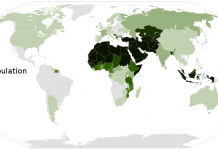The Pakistani internet community is celebrating the reincarnation of YouTube, but there are those who have taken the ban reversal personally.
After all, the ban, imposed on the world’s largest video-sharing website in September 2012, meant there was a vacuum waiting to be filled. These Pakistanis launched local proxies to counter the ban, meaning that internet users had to themselves the next-best alternative.
However, their flourishing businesses are now bound to take a financial hit. Over 50 small entrepreneurs whose business model was custom-built to fill the void have already started feeling the pinch.
Local video-sharing websites have been witnessing a steady drop in traffic since December 5, 2015 — when the world’s largest video-streaming website became accessible across Pakistan.
“With the government removing the official ban last week, things are only going to get worse for YouTube’s local proxies,” say experts.
YouTube was blocked in Pakistan on September 17, 2012 for not removing blasphemous content from its platform.
After Google – YouTube’s parent company – and the Government of Pakistan failed to reach any agreement in this regard, the Pakistan Telecommunication Authority (PTA); the telecom sector’s regulatory body, directed the country’s internet service providers to block access to YouTube.
Though the website officially remained blocked in the country for over three years, it was always available to Pakistani users through proxy servers. It became even easier to access the website’s content after local entrepreneurs launched their own portals allowing ‘direct access.’ Local video-streaming websites, such as playit.pk, ytpak.com and tune.pk, not only provided an alternative to YouTube but also flourished and booked significant profits.







